It only takes the opening theme of Band of Brothers to make me cry. Now, I can add The Pacific to that list. I am not embarrassed to admit this, because anyone who is not brought close to tears when they think about World War II is guilty of either the grossest ignorance or the most unforgivable callousness. WWII (I won’t object to adding WWI as well, especially if you adhere to the ‘30 year war’ interpretation) was the most cataclysmic event of the 20th century and, arguably, of mankind’s entire history. And, personally, the Pacific theater of WWII is the closest thing I can think of when I try to imagine Hell.
I spent the majority of the last two years of my undergraduate degree studying WWII, specifically the Pacific theater. I have been reading books about the subject far longer than that. Yet, I have barely scratched the surface. I don’t even dare consider myself an amateur WWII historian; academics devote their entire careers to the subject. But, I know enough about the subject to be able to spot the annoying inaccuracies contained in nearly every movie ever made about the conflict…or to question the way filmmakers choose to portray it.
This is why I have tremendous respect for Steven Spielberg, Tom Hanks, and everyone involved in Band of Brothers and The Pacific. More than attempting to produce cliché-ridden blockbusters that can be peddled off as commodities, they strive to bring historical accuracy and integrity to the filmmaking process. I believe that filmmakers have a personal responsibility to depict WWII as accurately and realistically as possible. And we, as the audience, have a personal responsibility to advance our understanding of the subject past whatever our high school US History class taught us. This applies not only to WWII, but to the subject of WAR in general. War is not cool. It is not glamorous or fun or badass. Even if it is necessary or unavoidable, it is still the single most unimaginably horrible and wasteful act that humans are capable of.
Past the accurate re-creation of battles, uniforms, environment, and technology, past the disturbingly realistic special effects, the makers of Band of Brothers and The Pacific never forget (and never let the audience forget) that they are depicting real events and real people, not fictional characters and exaggerated situations. Put simply, Band of Brothers and The Pacific represent simply some of the finest examples of historical and military filmmaking ever.
I have been anticipating the release of The Pacific for longer than I care to admit. I idolize Stephen Ambrose more than I care to admit. Now that it’s finally coming out, I am going to begin posting my thoughts on the miniseries as it airs.
The Pacific is based on With the Old Breed: At Peleliu and Okinawa by Eugene B Sledge and Helmet for My Pillow by Robert Leckie. It also draws on the books China Marine by Sledge and Iwo Jima: Red Blood, Black Sand by Chuck Tatum. I have read all of these books and will be comparing them with The Pacific as I post about each episode, with the exception of Iwo Jima: Red Blood, Black Sand. It is currently out of print and since I am no longer near my university library, I won’t be able to reference it. I will also be drawing information from Eagle Against the Sun: The American War With Japan by Ronald Spector, one of the finest and enjoyable pieces of historical scholarship on the Pacific War that I have ever read (despite its obnoxious cover). I highly recommend all of these books to anyone interested in modern history, military history, or WWII.
I hope that the people who read my blog will find these posts interesting and enjoy watching The Pacific as much as I will. The Pacific can be watched online at HBO’s website. As always, I encourage everyone to share their thoughts on the subject as well.
Japanese Imperialism 1894-1945 Review
In the space of 50 years, Japan built an empire that stretched from northern Manchurian down to the tip of Australia. Though its existence proved ephemeral, this was a staggering accomplishment for an island nation that had remained largely (though not completely) disconnected from the Western world until the mid-19th century and had only begun to modernize in 1868. In Japanese Imperialism 1894-1945, W.G. Beasley provides an overview of Japanese territorial expansion and imperialism, beginning with the Sino-Japanese War and ending with Japan’s defeat in the Second World War. In Beasley’s own words, the thesis of this book is as follows; “I do not believe the human impetus towards imperialism needs explaining…What the character of a society, or the international circumstances with which it has to deal, does indeed determine the timing and direction of the impetus, the degree of its success or failure, the kind of advantages that are sought, the institutions that are shaped to give them durability…That is what I propose to examine with respect to Japan” (Beasley, 13). This thesis struck me as vague and somewhat ill-defined. Essentially Beasley does not intended to examine why Japan attempted to carve itself an empire out of East Asia but how it did so. Much of this book is merely a summary of the conventional narrative on the subject with exhaustive references to names and dates. Ultimately, Beasley does not substantially contribute to the historical debate on the subject and merely synthesizes existing lines of thought. Upon turning the last page, the reader knows nothing more than the standard facts and is left to wonder what the point of picking up the book was in the first place.
Dead Girl Walking is one of six segments of a made-for-TV series called ‘Hino Theater of Horror,’ all adapted from the works of manga artist Hino Hideshi. Hino Hideshi dreams up pretty dark ideas for his manga and he ranks just below Junji Ito as one of the most important Japanese horror-gore manga artists. Yuri (Maeda Ayaka), a young student, suddenly dies from a heart attack…except she doesn’t die. Though clinically dead, she continues to think, act, and feel just like any other high school girl. She attempts to ‘live’ on, even as her body begins to rot. Her family, forced to live with an abomination and deal with her increasing stench, try a variety of ways to actually kill her. Unfortunately she is already dead, so their efforts are in vain. Despised by everyone, she runs away and becomes a homeless vagrant, her body slowly falling to pieces. Walking along the road, she gets picked up by a strange man and forced into some bizarre circus act, where she may or may not have been raped by a group of perverse business men. Ultimately her decomposition progresses so far that she can no longer move and her family douses her body in gasoline and burns her ‘alive.’ Then there is some sort of birth/death sequence and, finally truly dead, Yuri can rest in peace.
Imagine George A. Romero’s Land of the Dead fused with Simon Pegg’s Shaun of the Dead and you’ll have a pretty good idea of what this movie is about. However, based on the manga by Hanakuma Yusaku and written and directed by Sato Sakichi (the man responsible for the Ichi the Killer adaptation), Tokyo Zombie is inescapably Japanese.
In Japan, there is a form of poetry called 落首, which literally means ‘the head fell off.’ This can be read as ‘ochi gaki,’ ‘ochi kubi,’ or ‘rakushu.’ Though it began in the Heian period, it was extremely popular during the Edo period. Because the Tokugawa shogunate fiercely restricted free speech, people used these poems as a form of political criticism. The name ‘the head fell off’ came from the fact that by writing these poems the author was literally risking having his head cut off. These were usually written on walls as graffiti, think Bansky but during feudal Japan. These poems were always anonymous and also very witty.
Here is a modern rakushu about Japan’s current Prime Minister, Hatoyama Yukio.
Below is a translation. Inside the “quotation marks” are the names of various birds and inside the (parenthesis) are the second meanings of those birds’ names. Line by line, here it goes:
.
日本には謎の鳥がいる。正体はよく分からない。
We have a mysterious bird in Japan. We don’t really know what it is.
中国から見れば「カモ」に見える。
Chinese say it is “Kamo” (stupid person is can easily deceived)
米国から見れば「チキン」に見える。
Americans say it is “Chicken” (chicken, as in scared or afraid)
欧州から見れば「アホウドリ」に見える。
Europeans say it is “Ahoudori” (ahou = aho, or idiot)
日本の有権者には「サギ」だと思われている。
Japanese think it is “Sagi” (liar/cheater)
オザワから見れば「オウム」のような存在。
But Ozawa says it is “Oumu” (yes-man, as in the guy who always says yes to Ozawa) [Ozawa here is obviously Ozawa Ichiro, the current head of the DPJ]
でも鳥自身は「ハト」だと言い張っている。
But the bird itself says he is “Hato” (Pigeon, helpless and unsure of where to go, as in Hatoyama)
それでいて、約束をしたら「ウソ」に見え
When it promises something, it ends up with “Uso” (lies)
身体検査をしたら「カラス」のように真っ黒、
During inspection, it becomes as black as “Karasu” (crow, as in corrupt)
釈明会見では「キュウカンチョウ」になるが、
In front of reporters, it becomes “Kyuukan-chou” (naive/plain person)
実際は単なる鵜飼いの「ウ」。
In reality, it is merely a “u” (U is a bird that catches fish for people, IE a slave.)
私はあの鳥は日本の「ガン」だと思う。
But I believe it really is a “Gan.” (cancer)
.
Here is the link to the original article (in Japanese): http://www.iza.ne.jp/news/newsarticle/politics/politicsit/351425/
And massive thanks to Hide for showing me this in the first place and helping me understand it!
It’s February, which means that the Japanese school year is nearing an end. Last week, I had my final class with my 3 third year Advanced English students. These three boys are a really amazing bunch of kids, I was constantly impressed by their English abilities and interest in Western culture. They all wrote me farewell letters, which were funny and sweet. Here they are:
When I met you first, I just took a rest (lunch-time). Since I was poor at speaking English, probably I think you couldn’t understand it. But you managed to interpret what I said. When I knew you like horror movies, I thought you were a dangerous person. In fact, you are a good teacher. I remembered your making chocolate apples for us. We ate sashimi together in the library didn’t it? I remember well. You may forget us but I would like you to remember that we are your students. Thank you until now. That’s all.
When I first listened to you speak English, it was too fast for me to listen to your English. So it took me long time to make out what you say. But by you speaking English at natural speed, I have brought up my listening ability. This is so good for entrance examinations and my future. And I also had my essays checked by you. When I first had my essay checked, you added a lot of advice to my essay and a lot of English rules on another sheet. I have never had a teacher like you who inquired into it so closely. Thank you much, I sincerely appreciate it. Come to think of it, I regret not having my essays checked since you came here. But what I did makes for me a great deal. You like Japanese so much, and there are many Japanese cultures and many what Japanese made. I would like you to find them. The day will soon come when I learn a lot of your country’s cultures. So I have to study a lot. I hope you will succeed in everything and make your dreams come true. Thank you very much.
When you came to the school, I thought a model maybe came to it at first. When I was taken the first class, I was surprised because you learnt about Japan and Japanese things very well. Then, you showed us your home and the way you live in America. I was impressed with your stories that was different from Japanese ones in scale. The class looked like a party Halloween week was especially interesting. I enjoyed the special apple you made very much. I’m not a good student. I haven’t been what you expected to be. The only half-year has passed since we had met, you made me feel happy and motivated to improve my English. Thank you very much.
Awww, damn these kids, they make me want to cry.
If you go to Japan or have Japanese friends you’re bound to run into a purikura photo or photo booth. Purikura stands for purinto kurabu (プリント倶楽部), or print club. These photo booths were introduced in 1995 and by 1997 over 45,000 booths existed around the country (Okabe, Daisuke et al., pg. 1). It is popular with girls from the ages or 15 to 20. Virtually every Japanese high school girl take purikura photos and purikura is used as a way to visually display friendships and social networks to other (Okabe, Daisuke et al., pg. 2). Purikura are large photo booths that can hold anywhere from 4 to 8 people and offer a variety of background options for the users. After the photo has been taken, the girls can then go to a modification screen and write various kinds of ‘graffiti’ on their photos. They can also add image modifications to the photos, like makeup, different hairstyles, etc. The finished photos are printed out on sheets of self-adhesive stickers. Girls collect their purikura in photo albums as a sort of diary and carry the extra photos in a small container they call ‘puri-cans.’ High school girls look at their purikura albums with each other all the time, during lunchtime, after school, even in class. My students have given me purikura photos of themselves and their friends. Girls also exchange purikura photos with their friends. While some girls bring their boyfriends into purikura booths with them occasionally, the activity is mainly for girls (a Japanese boy would not own a purikura album).
Have you guys seen the old Coca-cola Zero commercials? They are ridiculously awesome…
“Hey, fat ass, just drink diet soda! It works for the Americans!” (Not an accurate translation)
This commercial spot ironically mocks the ‘Cool Biz’ (クールビズ) style that the government promotes in Japan to help cut down on air-conditioning and other types of electricity consumption. No one takes the Kyoto Protocol more seriously than Japan.
Way to go, Coca-cola. Let’s promote an image of anti-conformity while also alluding to samurai and ‘honorific individualism’ (if I can also allude to Ikegami Eiko’s book).
Clearly, Hosts are the Japanese counterpart to American Pimps. Except, rather than counting their ‘Benjamins’ and pouring champagne over their ‘hos,’ hosts compete to be the ‘King of Dandy’ and master the secret techniques of pleasing women (so she’ll beg to buy you that ¥300,000 D&G jacket). Rather than engaging in gangland warfare and trafficking drugs, these well-coiffed Japanese men battle amongst themselves for the coveted position of Number 1.
I, for one, can’t really decide which is more terrifying…wait, yes I can, the Hosts.
Well, for all you guys with dreams of hot women and tight designer pants, HOST KNUCKLE is here to help! Host Knuckle (or HOSU-NAKU if you prefer the affectionate Japanese abbreviation) is the magazine for hosts…or aspiring hosts…or bored Japanese housewives…or even more bored gaijin bloggers (me). The ~125 pages features lots of fashion spreads of really skinny Japanese dudes modeling intensely coordinated outfits in front of Shinjuku Kabukicho’s nightlife. I’d mention the hair…but that’d just be too easy. Crammed in-between the ads for Buffalo Bob’s, Midas, and VICE FAIRY (my personal favorite, NO VICE NO LIFE!), are informational articles about how to dress, the hippest new date spots in Kabukicho, and expos into the daily lives of REAL LIVE HOSTS! Not to mention a variety of ero guides (articles about how to entertain and please women), information on how pick the right hair salon to give you your own distinct hairstyle, and truly disturbing penile enlargement ads.
Even though I’m poking some fun at it, being a host is actually really hard work. It’s clearly not easy to drink yourself into a stupor every night, maintain cordial working relationships with your fellow hosts, and pretend that you’re attracted to the rich middle-aged woman who is paying you for your company. But don’t fret hosts, Host Knuckle is here to help you maintain you dandyish composure even in the most difficult situation!
Vol. 10 is dedicated to explaining the intricacies involved in the proper suit choice. It’s definitely not as easy as it looks – there’s the suit but then also the shirt, the shoes, and the myriad of jeweled accessories that you can pin to various places on your body. Thankfully, Host Knuckle usually narrows everything down into two options for you, so it isn’t all that hard. Do you want your coat to make you seem ‘wild’ or ‘intelligent?’ Should your suit be ‘dressy’ or ‘casual?’ Should you wear fake, lens-less glasses to give you an innocent ‘nerdy’ appeal or should you go for a more ‘mature’ image, perhaps by growing a bit of facial hair?
But don’t just take Host Knuckle’s word for it – the magazine regularly interviews the large amount of koakuma gyaru (the most recent evolution of the kogyaru – ganguro – kyabako species, see Koakuma AGEHA for more details) AKA the over-tanned Japanese girls who lurk in the recesses of the Shibuya 109 to verify this information for you. It turns out women really do prefer suits…even shiny ones with fur collars that make you look gay (for realzies!).
Think that this glamorous existence is impossible to obtain? Don’t fret, hosts are just normal guys who have mastered the arts of pleasing women and dressing well! HosuNaku breaks down their fashion secrets for you – now you’ve either got to dress like an high society kitsch rocker (whatever that is), develop a secret formula for ‘sexy pheromones,’ or summon the brutal strength of a python to win the hearts of your future sugar mamas. Another good quote – “Understanding the sweet and sour of life is the beginning of manhood.” Uhhhhhh, yeah.
But is being a host really a smart career choice? Sure, binge drinking and chain smoking might be fun when you’re 21, but does it really have a future? Well, don’t fear the glass ceiling. Look at this guy, he seems quite pleased…I bet his host club offers a fine pension plan for when he finally slips from the Number 1 spot. Maybe he’ll even open his own host club… Not unlike the host-with-a-heart-of-gold star of the recent television drama Tei-oh, which aired on TBS this past summer. It was an epic story of good triumphing over evil in the heart of the Roppongi host nightlife. For more, go to the show’s official website: http://www.tei-oh.com/
But of course, that leaves us with the most basic part of the job – pleasing women! Sure, they’re happy with you lighting their cigarettes and it definitely thrills them when you break societal norms and pour their drinks for them, but if you want them to really shell out the cash you need to get the latest Vice Fairy outfit…well, eventually you’ll probably have to sleep with them. And once more, HosuNaku is here to help. Remember – WHEN YOU ARE IN THE MIDDLE OF SEX, KEEP YOUR BODY CLOSE AND DO YOUR BEST TO PRETEND THAT YOU LOVE HER. Or just do a better job than the model in this feature…at least use more than two fingers to touch any part of her body.
(Warning, these pictures contain some nudity and simulated sex acts…don’t open them if they will offend you.)
Just follow Host Knuckle and you’ll be on your way to becoming the king of the elegant, dandyish, stardust celebrities in no time.
CORRECTION – Hosts aren’t the Japanese response to pimps after all…the Japanese response to pimps is…pimps. Or really tan dudes with facial hair and do-rags. Glide Media presents SOUL JAPAN, a do-it-yourself manual for the thug lifestyle. The upcoming Vol. 4 is a special edition featuring fashion AND favorite cars. I’m looking forward to seeing some pimped-out rides.
And now, thanks to the glory of YouTube, we now have our very own Host vloggers – http://www.youtube.com/watch?v=ELys5RKiE5s&feature=channel
危ない義理のできる男色
Oshima Nagisa’s 1999 film Gohatto is about desire and suspicion within the ranks of the Shinsengumi during the bakumatsu period. The film can be interpreted as both an examination of the destructive effects of desire within the brotherhood of the militia and as an allegorical criticism of the way modern Japanese society forces individuals to repress their desires for the sake of the group. While the second interpretation is entirely subjective, it is not unlikely given the fact that the director, Oshima Nagisa, commonly uses historical settings to criticize and examine modern society within his films. Furthermore, his failure to accurately reconstruct the sentiments of Tokugawa samurai during the mid-19th century within the film implies that Oshima Nagisa was more interested in using the subject matter to criticize modern society than in accurately reproducing the mentality of the time. It is clear that historical accuracy was not the primary concern of the director. Though Gohatto accurately portrays the environment and the official attitude of Tokugawa lawmakers towards shūdō (male-male relationships), its characters view the subject with an attitude that is far too modern.



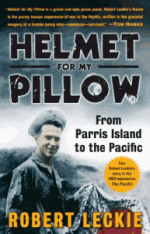


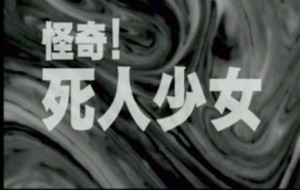


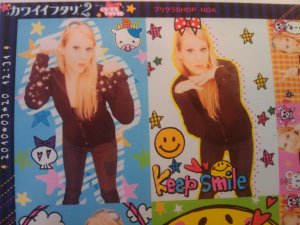



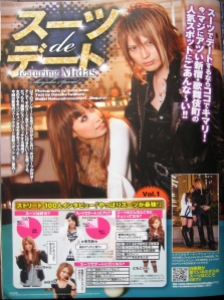












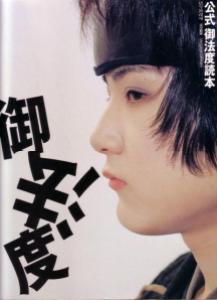
Recent Comments